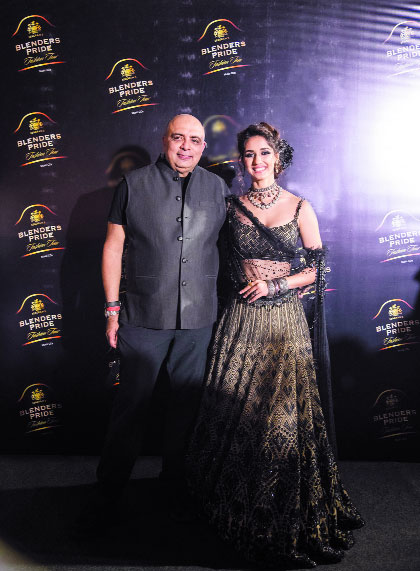Designer Tarun Tahiliani gets candid about India’s fashion history and how there was a need to document it.
What is pride? How does it distinguish one’s choices, styles and legacy? Designer Tarun Tahiliani believes that pride is the hallmark of today’s generation as a meaningful expression of their success. While their distinct choices define their individuality, the taste of pride comes from their self-earned achievements and accomplishments.
As the designer launches his ready-to-wear collection Pride at the Blenders’ Pride Fashion Tour 2018, his new concept urges people to love the world and their identity and the blend which they represent.
He says, “It signifies the emotions of contemporary India.”
He draws inspiration from the pride that each Indian, irrespective of his religious and regional identity and profession, takes when it comes to elements that define the country.
He explains what are the new techniques and styles that he has incorporated in this new collection. “We have tried a lot of new patterns and styles this time. We have done more tailoring to take our structure of draping to a whole new level. It is because the aim is to show an interesting blend of the past and the present and a telescope into the future.”
Through a showcase of 40 unique looks blending historical opulence with modern interpretation, he aims to explore and interpret the concept of ‘India Modern’ through fashion by mixing East with the West.
“I have mixed the two styles and designed it differently taking the styling to a more extreme vibe. I have done new things which are devoid of embroidery as the concept focusses at the present moment even though it is steeped in Indian traditions of draped form and techniques that Indian craftsmen have developed over the years with love.”
He uses VS Naipaul’s A Multiple Mutinies Now metaphorically to talk about a million ideas about India’s old culture that has “existed for a thousand years, has had many influences due to numerous foreign invasions.” He says that the biggest global influence that we have today is through social media and technology.
So how have contemporary designs found inspiration in the Indian history?
“Unfortunately, there wasn’t a lot to find in history because it wasn’t documented well in India. There are only the miniatures, which all look similar. There was a bit of documentation once the Britishers came in, which had more to do with Maharajas and the poverty which was in the draping style. However, I find a lot of inspiration in those drapes. This is the reason I also go to the Kumbh Mela where people still dress the way it was years ago. And I take my inspiration from that,” he says.
The collection employs new tailoring and draping in a way that is contemporary to India and combines western notions of cut, silhouettes, construct and finishing.
“The lehengas have become lighter and easier to be carried. They are voluminous and fluffy, feminine and have Indian beading. It carries the sensuality of the Indian draping.”
He says that a blend of the Western silhouettes and Indian aesthetics is in the fact that Indian fashion sense has provided a platform to push boundaries, “especially for people like me. I feel excited about the whole idea of blend because I always look at the modern India which in itself is a huge blend.” However, the designer says that he “doesn’t care” about whether we have managed to change the way the West looks at our fashion and craft. He says, “I changed the way I looked at craft and fashion. And now other people too. And to me that is the most important thing.”
He believes that Indians are incrementally becoming conscious consumers of everyday art. Designs today flow into the minutest aspects of daily life like dressing, household utility and casual meetings. He says, “Design changes the quality of life. However, this doesn’t mean that we forget the other simpler things.”
For him, the “rich Indian heritage’ of textiles has been inspiring. “I have worked a lot with Chikankari and Maheshwaris too. I have taken inspiration from the cutworks from Varanasi. My current love affair is with the Kanjeevaram fabrics.”
Actress Disha Patani was the showstopper of the fashion tour in Gurugram.
Writer: Chahak Mittal
Courtesy: The pioneer








 OpinionExpress.In
OpinionExpress.In















Comments (0)